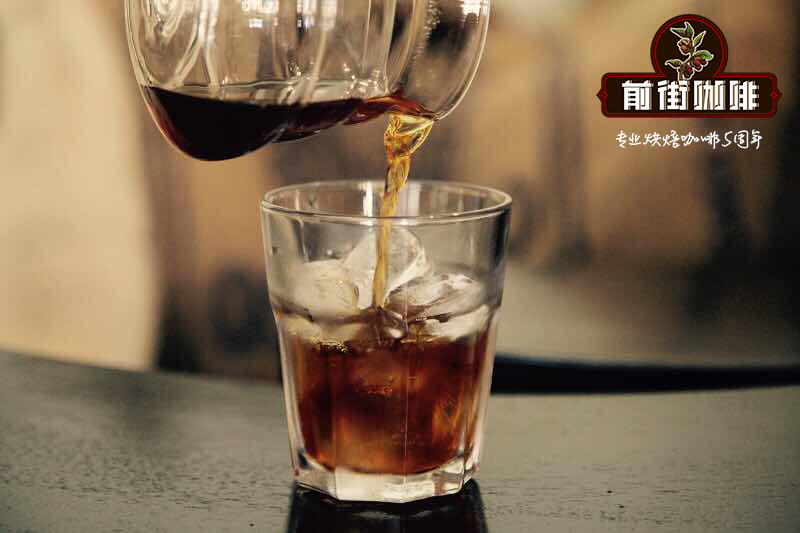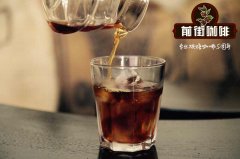How do Colombian [Kaddura] coffee beans taste? How to grade Colombian coffee beans?

Professional coffee knowledge exchange more coffee bean information please follow the coffee workshop (Wechat official account cafe_style)
How do Colombian [Kaddura] coffee beans taste? What is the grade of Colombian coffee beans? What coffee producing areas are there in Colombia?
Colombia's geographical environment is excellent: low latitudes, high elevations, coffee trees are mostly planted in the Andes, between 1200 and 1900 meters above sea level, and the planting area from south to north, staggered production seasons, coffee production throughout the year, becoming the world's third largest coffee supplier. In particular, Colombian coffee is an Arabica species, with a balanced, long-lasting, bright and mellow taste, is a good coffee that is easy to brew, and is very suitable for small family units, even office workers who drink American coffee machines or mocha pots with quick habits.
At present, there are two main producing areas in Colombia: commercial coffee producing areas and boutique coffee producing areas. Commercial coffee is distributed in Medillin, Armenia and Manizales in the north-central region, collectively known as MAM. The high-altitude areas in the south are the boutique coffees, such as Huila, San Augustin, Cauca, Tolima and Nari ñ o in St. Augustine. Colombian boutique coffee is mostly produced in the south, of which Hulia is the best-known boutique area, which has fertile valleys and cloudy Andes mountains, rich in volcanic ash for millions of years, gives birth to one of the best quality Colombian coffee, and is a winner of international cup testing competitions. this producing area has many small farmers who specialize in producing micro-batch boutique coffee. In addition, this batch is certified by the Colombian National Coffee producers Association F.N.C, which was established in 1927, to certify the quality of Colombian coffee and its producing areas. It is a non-profit organization dedicated to serving Colombian coffee farmers and the only professional guild in Colombia that represents official coffee.
Colombian coffee beans are graded according to the "size" of raw beans (1 item is 1 stroke 64 inches), so how to judge the size of raw beans? Let's "sift through the net" together! A total of three grades are divided into: Supremo (the highest 17 orders / 18 orders, 17 orders 6.75mm 7mm), Excelso Extra (16 orders / 15 orders), U.G.Q. (Usual Good Quality,14 / 12 orders, belong to commercial beans! See, XD). Therefore, to buy Colombian coffee beans, in addition to visually judging the size of coffee beans, be sure to confirm the "producing areas" of coffee beans again and again to ensure that they are the best coffee in Hong Kong.
In the Colombian coffee bean system, Supremo is the highest grade, while the preferred Excelso is smaller and more common. Colombian coffee beans have a balanced flavor, rich taste, unique flavor and relatively full body, with a touch of vanilla and dark chocolate on the flavor when roasted moderately.
The Colombian coffee trademark is owned by the Colombian National Coffee producers Association (FNC) and is certified for Colombian coffee quality and its producing areas. Founded in 1927, FNC is a non-profit organization dedicated to serving Colombian coffee farmers and is the only professional guild in Colombia that represents official coffee. FNC's main responsibilities include promoting the brand image of Colombian coffee around the world and supervising the quality of each grain of coffee exported from Colombia. Due to rampant diseases and insect pests, Costa Rican experts had to cultivate stronger new varieties, and in 2005, they finally released Castillo, which is resistant to leaf rust and rotten fruit disease, in honor of Dr. Dr. James Casti-llo. Based on Colombia, Castillo was backcrossed and selected with Caturra until the tenth generation of F10. It was not only resistant to leaf rust, but also resistant to fruit rot, and the flavor was more elegant.
* flavors: red fruit, citric acid, vanilla, nuts, dark chocolate, sweet and delicate aftertaste.
For example:
Production area: Hulia Huilan production area
Grade: Supremo
Altitude: 1300 Murray 1800 m
Treatment: washing
Variety: Caturra
Qianjie recommended cooking:
Filter cup: Hario V60
Water temperature: 88 degrees
Degree of grinding: small Fuji degree of grinding 4
Cooking methods: the ratio of water to powder is 1:15, 15g powder, the first injection of 25g water, 25 s steaming, the second injection to 120g water cut off, waiting for the powder bed water to half and then water injection, slow water injection until 225g water, extraction time about 2:00
Analysis: using three-stage brewing to clarify the flavor of the front, middle and back of the coffee. Because the V60 has many ribs and the drainage speed is faster, when the water is cut off, it can prolong the extraction time and better extract the nut and chocolate flavor of the tail section.
Flavor: changeable layers, clean as a whole, thin taste, long-lasting caramel sweetness in the finish.
Important Notice :
前街咖啡 FrontStreet Coffee has moved to new addredd:
FrontStreet Coffee Address: 315,Donghua East Road,GuangZhou
Tel:020 38364473
- Prev

Columbia Coffee Manor | [Xuefeng] [St. Augustine, Huila] [Medalin] Coffee
Professional coffee knowledge exchange more coffee bean information please follow the coffee workshop (Wechat official account cafe_style) Columbia Coffee Manor | [Xuefeng] [St. Augustus, Huila Province "
- Next

What are the varieties of coffee grown in Colombia? What are the flavor characteristics of Colombia? Main
Professional coffee knowledge exchange more coffee bean information please follow the coffee workshop (Wechat official account cafe_style) what are the varieties of coffee grown in Colombia? What are the flavor characteristics of Colombia? What are the main coffee producing areas? Colombian coffee is one of the few individual coffees sold in the world under its own name. In terms of quality, there is no other coffee.
Related
- Detailed explanation of Jadeite planting Land in Panamanian Jadeite Manor introduction to the grading system of Jadeite competitive bidding, Red bid, Green bid and Rose Summer
- Story of Coffee planting in Brenka region of Costa Rica Stonehenge Manor anaerobic heavy honey treatment of flavor mouth
- What's on the barrel of Blue Mountain Coffee beans?
- Can American coffee also pull flowers? How to use hot American style to pull out a good-looking pattern?
- Can you make a cold extract with coffee beans? What is the right proportion for cold-extracted coffee formula?
- Indonesian PWN Gold Mandrine Coffee Origin Features Flavor How to Chong? Mandolin coffee is American.
- A brief introduction to the flavor characteristics of Brazilian yellow bourbon coffee beans
- What is the effect of different water quality on the flavor of cold-extracted coffee? What kind of water is best for brewing coffee?
- Why do you think of Rose Summer whenever you mention Panamanian coffee?
- Introduction to the characteristics of authentic blue mountain coffee bean producing areas? What is the CIB Coffee Authority in Jamaica?

